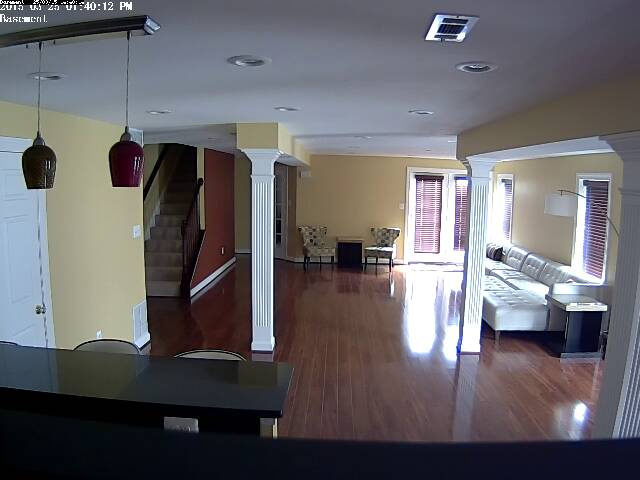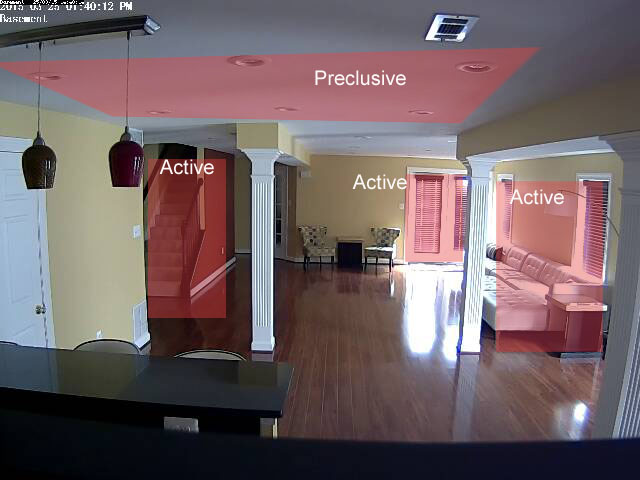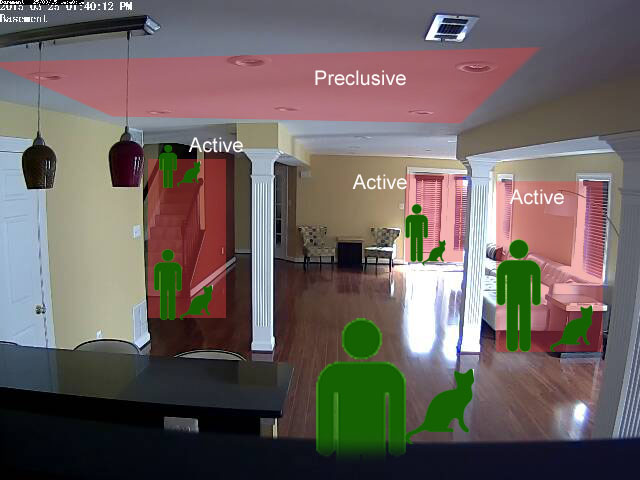Understanding ZoneMinder's Zoning system for Dummies
Background
ZoneMinder has a powerful zone detection system using which you can modify how sensitive, precise, accurate your motion alarms are. The official ZM documentation does a good job of describing all the concepts here. However, you will see gobs of posts in the forum about people complaining that ZM logs all sorts of events (ahem, as did I), ZM's detection is rubbish and in-camera is better (ahem, as did I) and what not. But once you get the concept, its incredibly powerful.
So instead of giving you a theoretical explanation, lets walk through a live use-case. (Credit: user kkroft helped a lot in me getting a hang of things here. You should also read his earlier explanation here)
Some concepts
Let's take a look at this area below. Lets suppose you want to trigger motion if someone tries to break into your basement. Does it make sense you monitor the full area (pillars/walls/floor)? Probably not. If someone were to break in, they'd break in from some door, some window, or maybe break in from upstairs and climb down the stairs. So doesn't it make more sense to monitor these areas specifically? I think so. So the first 'common sense' logic is delete the default zone that ZM creates for each monitor (which is called All). Monitoring every part of your image may make sense if you are monitoring and outdoor lawn, for example. Not here


